|
|
|
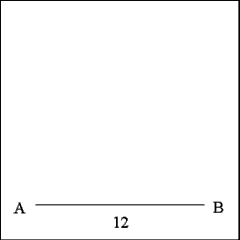 |
|
Construct a square with sides that are 12 inches long. Draw a right line
AB that is 12 inches long. This will be the base construction line for the
square and represents one side of the square. |
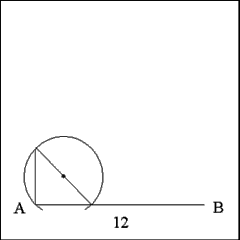 |
|
Construction the second side of the square by constructing a perpendicular
line from Point A. |
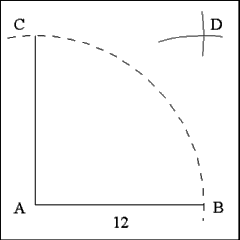 |
|
Extend the perpendicular line (AC) to a length of 12 inches; check the length
by describing an arc of a circle with a radius equal to the distance between
Points A and B through Point C.
Using Point C as center describe an arc of a circle with a radius of 12 inches
above point B on Line AB; do the same again using Point B as center. Mark
the point where the two arcs intersect as Point D. |
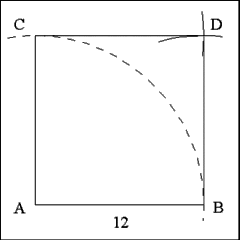 |
|
Produce right lines from Point C to Point D and from Point B to Point D.
These form the third and fourth sides of the required the square ACDB. |
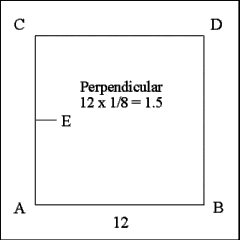 |
|
To convert the square into a star it will be necessary to create an indention
on each side of the square. This is performed by bisecting each side of the
square and producing a line perpendicular to the side of the square toward
the interior of the square.
The length of this perpendicular will determine the measure of the angles
of the star's salients, that is how pointy they will be when the star is
completed. It was a customary thing in the nineteenth century to take the
perpendicular for a square as equal to one-eighth (1/8) the length of the
side. In this case the sides are 12 inches, so 12 x 1/8 = 1.5; the perpendiculars
will then be 1.5 inches long. The perpendicular E is then, 1.5 inches long. |
 |
|
Continue the construction by bisecting each side and dropping the remaining
three perpendiculars, F, G, and H. All of these lines are 1.5 inches long. |
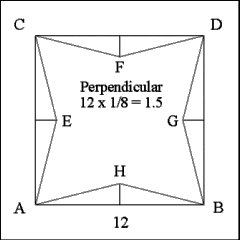 |
|
Complete the star by producing lines from each corner to the interior extremities
of collateral perpendiculars; that is, from D to F and D to G, B to G and
H, A to H and E, and C to E and F. These lines form the faces of the four
salient angles of the four salient star. |
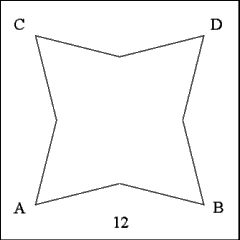 |
|
Everything clears up quite a bit when all the construction lines and marks
are removed leaving, of course, the faces of the four salient star intact. |
|
|
|